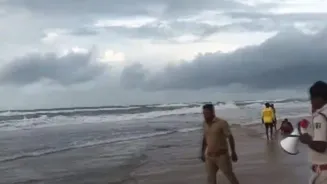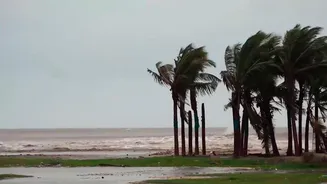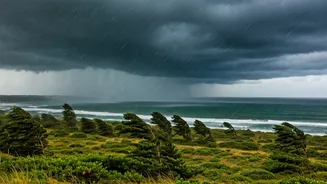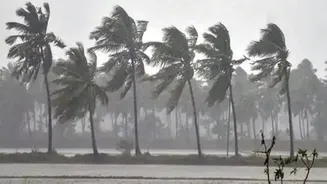Initial Impact and Damage
The aftermath of Cyclone Montha in Andhra Pradesh, Telangana, and Odisha was marked by widespread damage. Reports indicated that the cyclone caused severe
infrastructural issues. Homes were destroyed or damaged, trees uprooted, and power lines snapped, leaving numerous areas without electricity. Roads were blocked, making it difficult for emergency services to reach those in need. The strong winds and heavy rainfall disrupted daily life, impacting transportation, communication, and essential services. The overall impact demonstrated the cyclone's powerful force and the vulnerability of the region to such extreme weather events.
Casualties and Loss
One of the most tragic consequences of Cyclone Montha was the loss of life, with three fatalities reported across the affected areas. While the exact circumstances surrounding each death may vary, the human cost underscored the cyclone's destructive capabilities. Local authorities initiated investigations to determine the cause of each fatality and assess whether the losses could have been prevented. The number of injured people also remains unclear, as emergency services and relief workers worked tirelessly to identify and provide aid to the injured. The focus was on providing immediate medical care, shelter, and support to the families affected by the tragedies.
Regional Impact Detailed
Each of the affected states experienced unique challenges. In Andhra Pradesh, reports focused on the damage to coastal communities, with widespread flooding and infrastructure collapse. Telangana faced extensive power outages and disruption of transportation networks, particularly in the regions near the cyclone's path. Odisha saw significant damage to agricultural lands, crucial for the region's economy and food security. The diverse geographical conditions influenced the kind of damage each state experienced. The government officials in each state began immediate damage assessments, focusing on the worst-hit areas and implementing aid distribution strategies. These efforts aimed to address immediate needs and begin the process of reconstruction and long-term recovery planning.
Relief and Response Efforts
In the wake of Cyclone Montha, emergency relief operations were immediately launched to assist those affected. Government agencies, non-governmental organizations, and volunteer groups collaborated to provide essential aid. The distribution of food, water, and temporary shelter was prioritized to address the immediate needs of displaced people. Medical teams were deployed to offer healthcare services and address any health concerns that arose. Search and rescue operations were carried out in the affected areas, with the aim of rescuing individuals trapped and providing support. These collaborative efforts played a critical role in mitigating the impact and ensuring the safety of communities. The response highlighted the importance of coordinated disaster management and the community's spirit of solidarity during crises.
The Road to Recovery
The recovery process following Cyclone Montha is a multifaceted and long-term undertaking. It starts with a comprehensive assessment of the damage and needs of affected communities. The rebuilding of infrastructure, including homes, roads, and utilities, forms a significant part of the recovery process. The governments are expected to work closely with local authorities to design and implement recovery plans. This involves providing financial aid, technical assistance, and facilitating the return of displaced families to their homes. Supporting local economic recovery is also vital, and initiatives to assist farmers, small businesses, and other economic sectors are essential. The ultimate goal is to build resilience, reducing the vulnerability of communities to future disasters through improved infrastructure, disaster preparedness, and community engagement.














